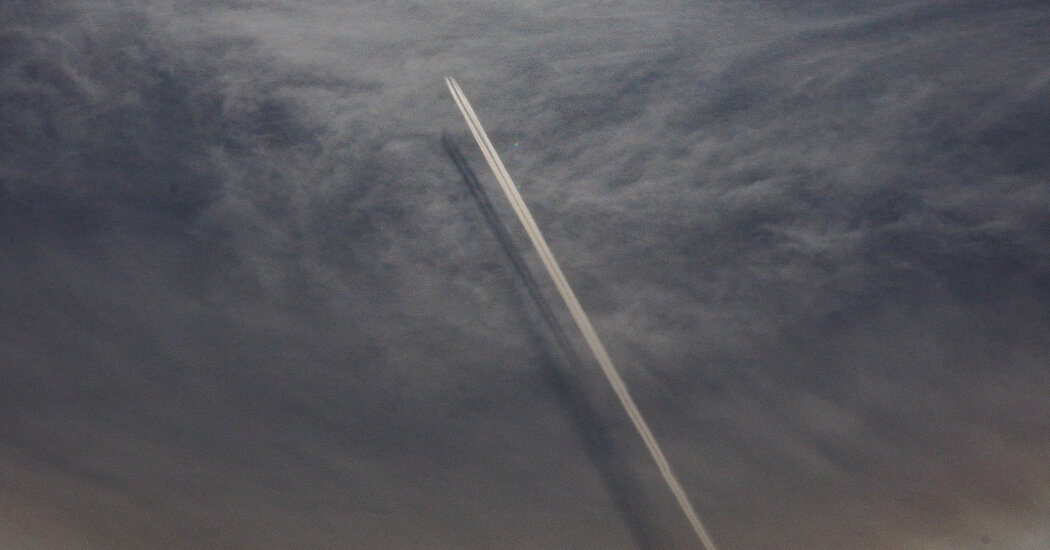Viewers of last week’s solar eclipse were treated to stunning celestial phenomena up and down the event’s path during totality. But those who watched it from Montreal saw a pair of additional surprises in the half-hour before and after the eclipse, when the moon obstructed the sun on April 8.
The first was an unusually sharp shadow caused by a passing airplane just after the total eclipse concluded. The second came in the form of a spectacular halo around the partially eclipsed sun.
The plane passing over Montreal during the partial phase of the eclipse left a typical contrail in its wake. When this happens in full sunlight, the shadows cast by contrails on clouds are usually too diffuse to see. In this case, the sharpness of the shadows was explained by the eclipse.
“Shortly after totality, the sun is a thin crescent which tends to make shadows much sharper, thus accentuating the shadow of the jet contrail,” said Fred Espenak, a retired NASA astrophysicist nicknamed “Mr. Eclipse” for his knowledge of the events.
Though the shadows of the contrails appeared to be on a layer of clouds above the aircraft, as though cast from reflected light from the Earth, this was an illusion. The shadows were made by the light of the sun, cast downward onto clouds below it.
The halo around the sun, however, was unrelated to the eclipse. This type of circular ring of light, which appeared both before and after the total eclipse last Monday, is called a 22-degree sun halo.
Such halo displays occur very frequently — on more than 100 days a year, according to Walter Tape, a professor emeritus of mathematics at the University of Alaska Fairbanks who has studied the phenomena extensively.
Sun halos are optical illusions created when ice crystals form in the correct shape in the upper atmosphere, usually accompanying thin, wispy cirrus clouds. At the right shape and angle (note the “22 degrees” in the halo’s name), the crystals reflect and refract incoming sunlight, sometimes resulting in multiple and even multicolored rings around the sun or moon.
Though most commonly sighted in polar regions, these displays can be seen from anywhere in the world. You may be more likely to spot bright sun halos during an event like the eclipse, while already looking skyward, but if you keep an eye out you may witness another one. Just make sure you don’t look directly at the sun as you search for it.
